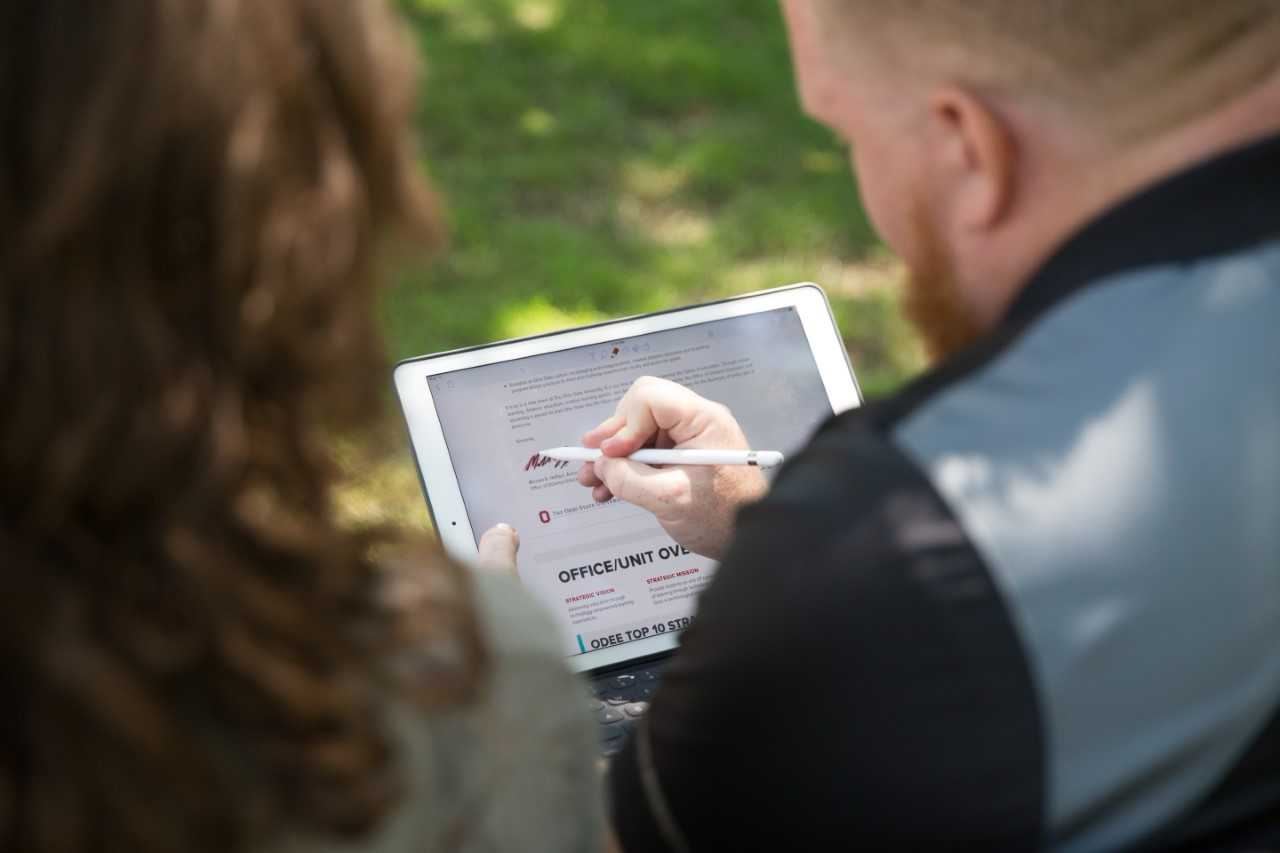The teacher becomes the student with Ohio State’s new Digital Flagship Educator Cohort program.
The new program allows instructors and graduate students who are teaching general-education courses at the 1000- or 2000-levels to apply to teach iPad-required sections of the classes beginning Autumn 2018.
iPad-required courses and the cohort arrive as a result of the Digital Flagship Initiative that will give the devices to all incoming freshmen starting next fall.
“The application is designed to give us a holistic view of the instructor who applies,” said Grace Buchholz, marketing and communications coordinator at the Office of Distance Education and eLearning. “We have a little bit of information about the courses they teach, but also about why they are interested.”
The cohort is looking for any instructors who are interested in bringing technology into their classroom regardless of technological skill, said Cory Tressler, associate director of learning programs at the Office of Distance Education and eLearning. Professional training will be provided depending on the skill the instructor has for operating the iPad and the information the instructor provides during the application process.
“It will help us when we do professional training with [instructors] to differentiate and put them in groups,” he said. “There may be one group that is a novice user and does not have much experience with iPads to a group of users who are super experienced with iPads.”
According to the Digital Flagship Educator Application website, participants will receive four days of training in May and access to one-on-one support with Ohio State instructional designers. They also will receive the same package of Apple products that first-year students next year will receive — an iPad Pro with Apple Pencil, Apple SmartKeyboard, Apple Care+, educational apps and a protective case for use in their teaching, learning and research at Ohio State.
With so many unknowns surrounding iPad-required courses, Tressler said there will still be “traditional” sections of general-education courses offered, but with time, the program will grow.
“This gives us an opportunity with these iPad-required sections to start working with faculty on what all of this looks like,” Tressler said. “It will take about four years to get to that point where I am a faculty member of any undergraduate level and I walk in and I know [the students] are all going to have iPads.”
The traditional sections of the same courses will not be at a disadvantage because instructors who are teaching an iPad-required section will be more tech savvy and able to incorporate other technology and applications in all of their sections regardless of brand, he said.
Tressler said only a small amount of the training course will discuss settings and iOS features. Most of the training will be centered on tailoring the technology to the instructor’s needs.
A lot of the professional training will be working with an instructional designer and educational technologist, Tressler said. After the program, professors will have the ability to decide to what extent they wish to incorporate the technology in their classroom.
“What we may do with an English 1110 course is going to be different than what we do with a Chemistry 1210 course,” Tressler said. “It is based on discipline, the comfort level of the faculty member, their experience with technology, their ideas on how they want to assess people and their pedagogical strategies. It is not a one-size-fits-all.”
Teachers must apply by Feb. 15 to be considered for the 2018 group.



